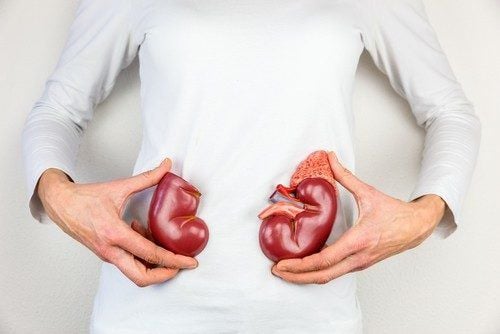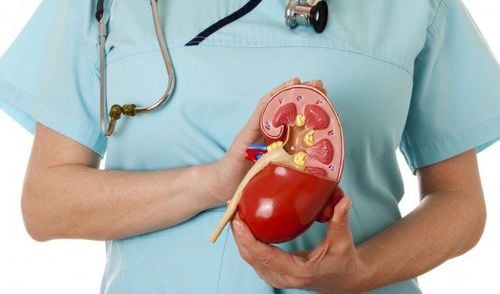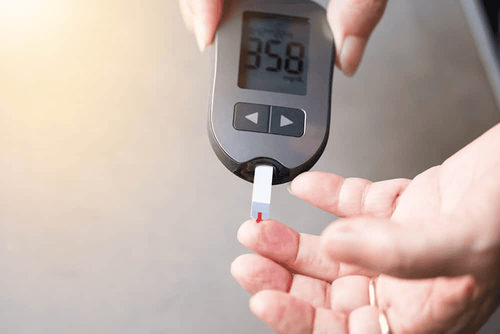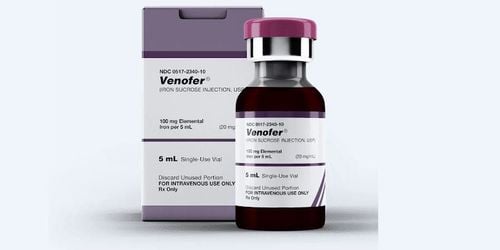This is an automatically translated article.
Chronic kidney disease is a slow and progressive loss of kidney function over several years. Patients with end-stage chronic kidney disease may develop kidney failure. However, whenever kidney disease progresses, dangerous levels of waste can quickly build up inside the body. Treatment is aimed at stopping or slowing the progression of kidney dysfunction by controlling the underlying cause.
1. What is chronic kidney disease? Chronic kidney disease is a slow and gradual condition that causes kidney dysfunction. However, if one kidney stops working, the other kidney can still perform basic functions in the body.
Most people with kidney disease don't know they have the disease because symptoms often don't develop in the early stages of CKD. Usually, by the time a person notices any symptoms, the condition is already in an advanced stage. Damage to the kidneys at this stage is irreversible.
2. Features of chronic kidney disease Symptoms of chronic kidney disease include:
High blood pressure Edema or swelling of the feet, hands and ankles Fatigue Decreased urine output Bloody urine Dark urine Decreased mental alertness with complications of chronic kidney failure Loss of appetite Persistent itchy skin Urinating more often, especially at night

Bệnh thận mạn là một tình trạng diễn tiến chậm và dần dần gây ra rối loạn chức năng thận
3. How are the stages of chronic kidney disease divided? Doctors use the concept of glomerular filtration rate (GFR) to determine how advanced chronic kidney disease is. In other words, the GFR value tells how well a person's kidneys filter waste. However, this number can depend on an individual's body size, gender, and age.
A doctor can determine a person's GFR by checking the level of creatinine in the blood. Creatinine is a waste product of creatine, which is an acid that helps fuel muscle cells. When the kidneys are working properly, they filter a relatively steady amount of creatinine from the blood. Changes in blood creatinine levels can indicate a person has a problem with their kidneys.
The change in a patient's GFR allows the doctor to classify chronic kidney disease into stages, as follows.
3.1. Stage 1 Stage 1 CKD means the person's GFR is at least 90 milliliters per minute (ml/min) per 1.73 m2. This is normal kidney function but there is evidence of kidney damage. Some signs of stage 1 kidney damage may be protein in the urine or physical damage.
3.2. Stage 2 If a person has stage 2 chronic kidney disease, the GFR is 60-89 ml/min per 1.73 m2. A GFR in this range usually means the kidneys are working well. However, this GFR indicates that a person with stage 2 CKD has additional signs of kidney damage. These signs may include physical damage to the kidneys or protein in a person's urine.
3.3. Stage 3 In stage 3 chronic kidney disease, the GFR is in the range of 30-59 ml/min per 1.73 m2. This range indicates that the person has some damage to the kidneys and the kidneys are no longer able to function properly.
Stage 3 chronic kidney disease can be separated into two subtypes:
Stage 3a: Stage 3a means a GFR between 45-59 ml/min per 1.73 m2. Stage 3b: Stage 3b means a GFR between 30-44 ml/min per 1.73 m2. Although most people with stage 3 CKD have no symptoms, some people may experience:
Swelling in the hands and feet Back pain Urinating more often Anemia High blood pressure Osteoporosis 3.4. Stage 4 In stage 4, the GFR is 15–29 ml/min per 1.73 m2. At this stage, the kidneys have suffered moderate to severe damage and is the final stage of kidney disease before entering chronic kidney failure complications such as swelling of the hands and feet, back pain and frequent urination. than. Other complications such as anemia or bone disease are also more likely.
3.5. Stage 5 A person with stage 5 kidney failure has a GFR of 15 ml/min per 1.73 m2 or less. At this stage, the kidneys almost no longer guarantee the basic functions.
Symptoms of kidney failure include:
Itching Muscle cramps Nausea Vomiting Swelling in hands and feet Back pain Urinating more often Difficulty sleeping Difficulty breathing If kidney failure reaches this stage, the person will require dialysis or a kidney transplant to survive. Dialysis helps to filter water and toxins in the blood when the kidneys are no longer able.

Các triệu chứng của suy thận bao gồm chuột rút cơ bắp
4. What are the causes of chronic kidney disease? The kidneys function as a complex filtration system in the body, helping to remove waste and excess fluid from the blood and excrete it from the body. Accordingly, problems that cause kidney damage can occur when:
Blood flow does not reach the kidneys properly Direct damage to the kidney parenchyma If there is an obstruction that prevents urine flow out Consequences of diabetes or high blood pressure. Specific causes of CKD include:
Impeded flow of urine: Obstructed urine can back up into the kidneys from the bladder, increasing pressure on the kidneys and impairing kidney function. power. Possible causes are prostate enlargement, kidney stones, and tumors. Kidney diseases: Polycystic kidney disease, pyelonephritis and glomerulonephritis. Renal artery stenosis: Narrowing or blockage of the renal artery as it enters the kidney. Heavy Metal Poisoning: Lead is a common source of kidney toxicity. Systemic lupus erythematosus: This is an autoimmune condition in which the body's immune system attacks the kidneys as if they were foreign tissue. Malaria and yellow fever: These two mosquito-borne diseases can cause impaired kidney function. Certain medications: Overuse of certain drugs, especially NSAIDs, can lead to kidney failure. Illicit drug use: Using substances like heroin or cocaine can damage the kidneys. Kidney injury: Being hit hard or another physical injury to the kidney can cause kidney damage. To diagnose CKD, a doctor may check for signs of the disease and ask the patient about common symptoms. However, this pathology is mainly based on urinary function tests, including:
Urinalysis: helps determine the presence or absence of albumin. Albumin is found in the urine when the kidneys are damaged. Kidney scan: Doctors often use ultrasound to evaluate the size and shape of the kidneys. An MRI or CT scan may also be used in rare cases, especially when the ultrasound is not clear. Kidney biopsy: The doctor takes a small sample of kidney tissue and checks it for cell damage. Chest X-ray: The purpose of a chest X-ray is to check for pulmonary edema, which is fluid trapped in the lungs. GFR: This number shows how well the kidneys are still able to filter waste. This index is calculated based on blood creatinine and other parameters of each person such as age, gender, and weight. In summary, chronic kidney disease is a common condition, but often, people don't realize they have it until kidney function has significantly declined. When the chronic kidney failure is complicated, the patient will need dialysis or a kidney transplant to maintain life. The prevention of chronic kidney disease depends largely on controlling the primary causes, which are diabetes and hypertension. Accordingly, people at risk for chronic kidney disease should consult with their doctor about routine kidney function testing. In addition, leading a healthy lifestyle through diet and exercise can also help prevent chronic kidney failure complications.
Please dial HOTLINE for more information or register for an appointment HERE. Download MyVinmec app to make appointments faster and to manage your bookings easily.













